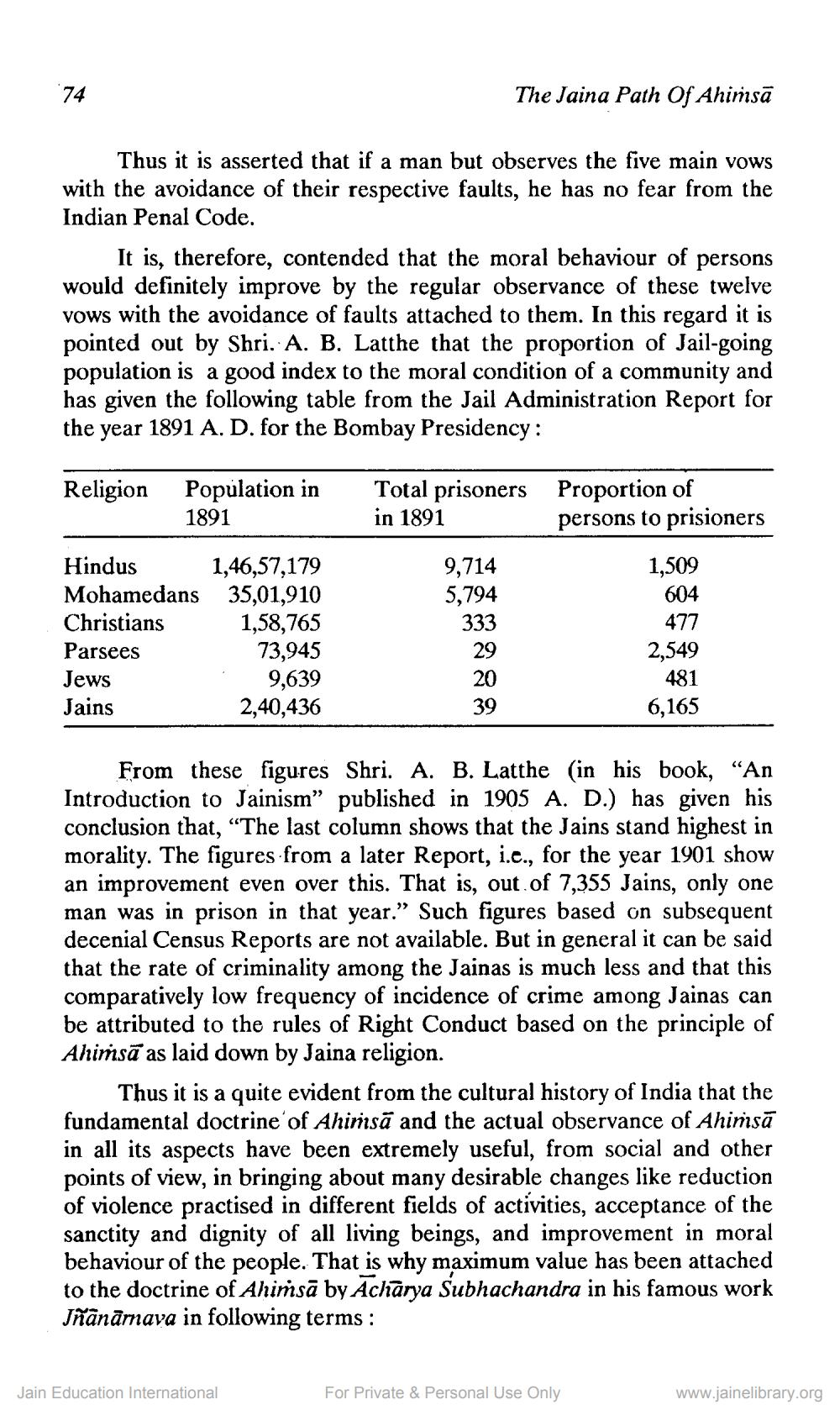________________
74
The Jaina Path Of Ahimsā
Thus it is asserted that if a man but observes the five main vows with the avoidance of their respective faults, he has no fear from the Indian Penal Code.
It is, therefore, contended that the moral behaviour of persons would definitely improve by the regular observance of these twelve Vows with the avoidance of faults attached to them. In this regard it is pointed out by Shri. A. B. Latthe that the proportion of Jail-going population is a good index to the moral condition of a community and has given the following table from the Jail Administration Report for the year 1891 A. D. for the Bombay Presidency:
Religion
Population in 1891
Total prisoners in 1891
Proportion of persons to prisioners
1,509
604
Hindus 1,46,57,179 Mohamedans 35,01,910 Christians 1,58,765 Parsees
73,945 Jews
9,639 Jains
2,40,436
9,714 5,794 333 29
477 2,549
481 6,165
20 39
From these figures Shri. A. B. Latthe (in his book, “An Introduction to Jainism” published in 1905 A. D.) has given his conclusion that, “The last column shows that the Jains stand highest in morality. The figures from a later Report, i.e., for the year 1901 show an improvement even over this. That is, out of 7,355 Jains, only one man was in prison in that year.” Such figures based on subsequent decenial Census Reports are not available. But in general it can be said that the rate of criminality among the Jainas is much less and that this comparatively low frequency of incidence of crime among Jainas can be attributed to the rules of Right Conduct based on the principle of Ahiṁsā as laid down by Jaina religion.
Thus it is a quite evident from the cultural history of India that the fundamental doctrine of Ahimsā and the actual observance of Ahirsā in all its aspects have been extremely useful, from social and other points of view, in bringing about many desirable changes like reduction of violence practised in different fields of activities, acceptance of the sanctity and dignity of all living beings, and improvement in moral behaviour of the people. That is why maximum value has been attached to the doctrine of Ahimsā by Acharya Subhachandra in his famous work Jñānārnava in following terms :
Jain Education International
For Private & Personal Use Only
www.jainelibrary.org




